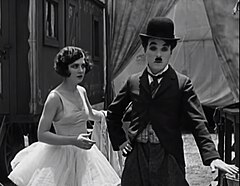
Sir Charles Spencer Chaplin was an English comic actor, filmmaker, and composer who rose to fame in the era of silent film. He became a worldwide icon through his screen persona, the Tramp, and is considered one of the film industry's most important figures. His career spanned more than 75 years, from childhood in the Victorian era until a year before his death in 1977, and encompassed both adulation and controversy.

The Great Dictator is a 1940 American anti-war political satire black comedy written, directed, produced, scored by, and starring British comedian Charlie Chaplin, following the tradition of many of his other films. Having been the only Hollywood filmmaker to continue to make silent films well into the period of sound films, Chaplin made this his first true sound film.

City Lights is a 1931 American synchronized sound romantic comedy-drama film written, produced, directed by, and starring Charlie Chaplin. While the film has no audible dialog, it was released with a synchronized musical score with sound effects. The story follows the misadventures of Chaplin's Tramp as he falls in love with a blind girl and develops a turbulent friendship with an alcoholic millionaire.

The Gold Rush is a 1925 American silent comedy film written, produced, and directed by Charlie Chaplin. The film also stars Chaplin in his Little Tramp persona, Georgia Hale, Mack Swain, Tom Murray, Henry Bergman and Malcolm Waite.

Modern Times is a 1936 American part-talkie comedy film produced, written and directed by Charlie Chaplin. In Chaplin's last performance as the iconic Little Tramp, his character struggles to survive in the modern, industrialized world. The film also stars Paulette Goddard, Henry Bergman, Tiny Sandford and Chester Conklin.

Tillie's Punctured Romance is a 1914 American silent comedy film directed by Mack Sennett and starring Marie Dressler, Mabel Normand, Charlie Chaplin, and the Keystone Cops. The picture is the first feature-length comedy and was the only feature-length comedy made by the Keystone Film Company.
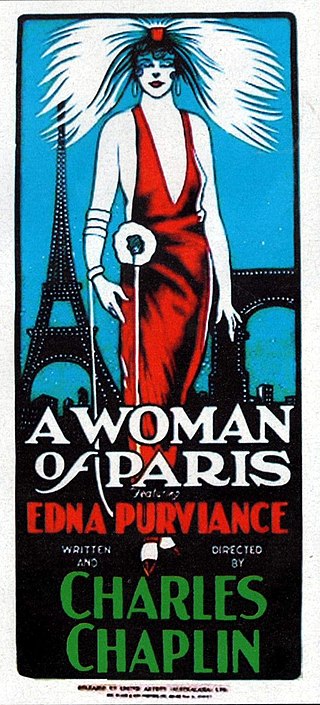
A Woman of Paris is a feature-length American silent film that debuted in 1923. A United Artists production, the film was an atypical drama film for its creator, written, directed, produced and later scored by Charlie Chaplin. It is also known as A Woman of Paris: A Drama of Fate.

Limelight is a 1952 American comedy-drama film written, produced, directed by, and starring Charlie Chaplin, based on a novella by Chaplin titled Footlights. The score was composed by Chaplin and arranged by Ray Rasch.
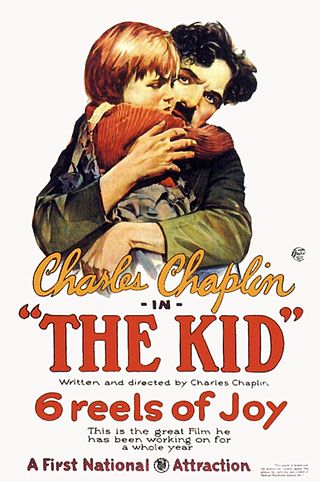
The Kid is a 1921 American silent comedy-drama film written, produced, directed by and starring Charlie Chaplin, and features Jackie Coogan as his foundling baby, adopted son and sidekick. This was Chaplin's first full-length film as a director. It was a huge success and was the second-highest-grossing film in 1921. Now considered one of the greatest films of the silent era, it was selected for preservation in the United States National Film Registry by the Library of Congress in 2011.

Circus clowns are a sub-genre of clowns. They typically perform at circuses and are meant to amuse, entertain and make guests laugh.

A King in New York is a 1957 British comedy film directed by and starring Charlie Chaplin in his last leading role, which co-stars, among others, his young son Michael. The film presents a satirical view of the McCarthy communist-hunt era and certain other aspects of United States politics and society. The film, which was produced in Europe after Chaplin's exile from the U.S. in 1952, did not open in the United States until 1972.
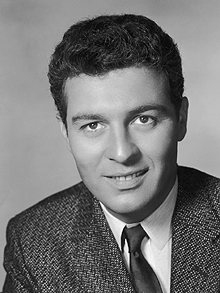
Sydney Earl Chaplin was an American actor. He was the second son of Charlie Chaplin and Lita Grey. One of his major roles was in his father's film Limelight (1952). In theater, Chaplin won the Tony Award for Best Featured Actor in a Musical for his 1957 performance in Bells Are Ringing.

Merna Kennedy was an American actress of the late silent era and the transitional period into talkies.

The Pilgrim is a 1923 American silent film made by Charlie Chaplin for the First National Film Company, starring Chaplin and Edna Purviance.

The Idle Class is a 1921 American silent comedy film written and directed by Charlie Chaplin for First National Pictures.

Lita Grey, who was known for most of her life as Lita Grey Chaplin, was an American actress. She was the second wife of Charlie Chaplin, and appeared in his films The Kid, The Idle Class, and The Gold Rush.
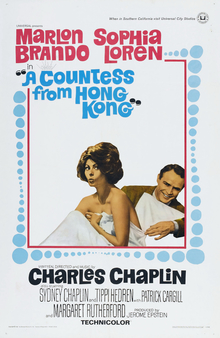
A Countess from Hong Kong is a 1967 British romantic comedy film scored, written, and directed by Charlie Chaplin, and the final film directed, written, produced and scored by him. Based on the life of a former Russian aristocrat, as he calls her in his 1922 book My Trip Abroad. She was a Russian singer and dancer who "was a stateless person marooned in France without a passport." The film starred Marlon Brando and Sophia Loren, and revolved around an American diplomat who falls in love with a stowaway on a cruise. Sydney Chaplin, Tippi Hedren, Patrick Cargill and Margaret Rutherford co-star in major supporting roles; Chaplin also made a cameo, marking his final screen appearance.

Georgia Theodora Hale was an actress of the silent movie era.

(Sir) Charlie Chaplin (KBE) (1889–1977) was an English internationally renowned Academy Award-winning actor, comedian, filmmaker and composer who was best known for his career in Hollywood motion pictures from his debut in 1914 until 1952; he however subsequently appeared in two films in his native England. During his early years in the era of silent film, he rose to prominence as a worldwide cinematic idol renowned for his tramp persona. In the 1910s and 1920s, he was considered the most famous person on the planet.

Jeffrey Vance is an American film historian and author who has published books on movie stars including Buster Keaton and Charlie Chaplin.

